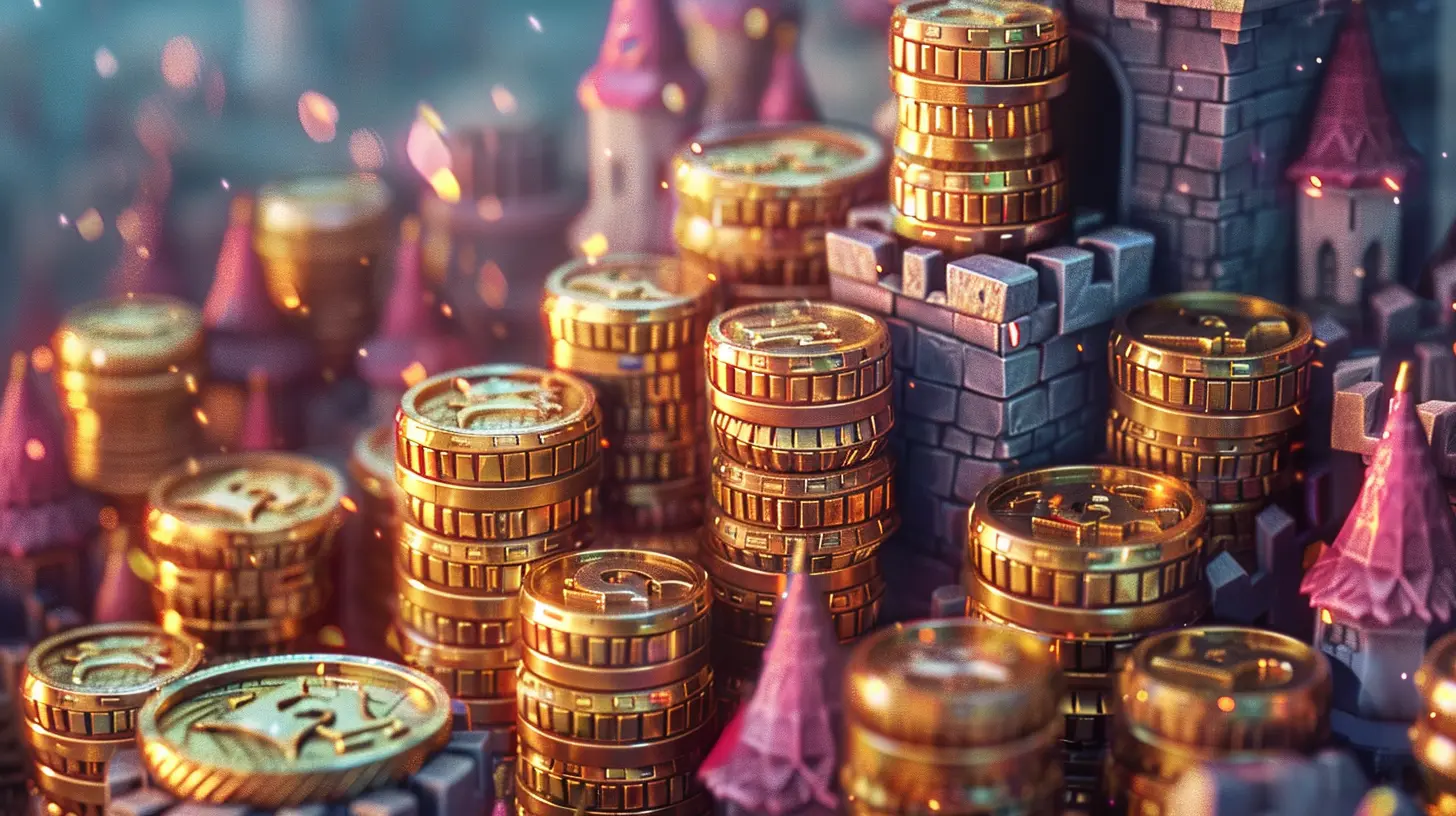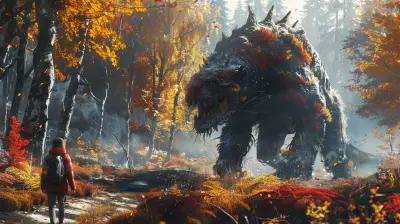How Do Microtransactions Affect Game Longevity and Replayability?
29 July 2025
There’s a double-edged sword slicing through the heart of modern gaming—the microtransaction. On one side, they keep the lights on for developers long after a game’s release. On the other? They threaten to cheapen the experience, turning adventures into paywalled passageways. So let’s dig deep and really ask ourselves: how do microtransactions affect game longevity and replayability?
In this little digital odyssey, we’ll explore both the sweet nectar and the bitter aftertaste of microtransactions. You’ll see where they shine, where they stumble, and how your favorite games are quietly shifting under your thumbs.
The Rise of the Microtransaction Empire
Once upon a time, you bought a game, popped in the cartridge or disc, and that was it. What you saw was what you got. Fast forward to today, where games are like living museums—you pay to get in, and sometimes, you pay again to see each exhibit.Microtransactions crept in during the mobile gaming boom, offering players a quick fix for a small fee—skip a level here, unlock a shiny sword there. Before long, this model spilled into the console and PC arenas. Fortnite, Call of Duty, FIFA, and even single-player titles began weaving in digital marketplaces like little shops on every corner.
But here’s the thing—microtransactions aren’t inherently evil. Like any tool, it depends on how they’re used.
What Are Microtransactions, Really?
Let’s break it down. A microtransaction is a small purchase made within a game. Think cosmetic skins, battle passes, loot boxes, currency bundles, or even new characters. Some cost a couple of bucks; others will have you question your life choices.They fall into a few categories:
- Cosmetic-only: No impact on gameplay—just for show.
- Pay-to-progress: Speed up your advancement—skip the grind.
- Pay-to-win: Stat-boosting gear or characters—can tilt the playing field.
Each type hits differently when it comes to how long we play and whether we come back again for more.
Microtransactions & Game Longevity: A Faustian Deal?
Developers want you to stick around. And microtransactions, when designed right, can keep a game alive far beyond its original shelf-life. Think of them as the secret sauce in an ongoing buffet. They fund updates, expansions, seasonal content, and everything in between.When They Help Longevity
Let’s say you’re knee-deep in your favorite online shooter. The devs drop fresh maps, new modes, and even limited-time events every season. Where do they get the budget? From microtransactions. Every time someone buys a fancy skin or exclusive emote, they help pump lifeblood back into the game.Look at games like:
- Fortnite – Constant reinvention, seasonal themes, celebrity drops.
- Apex Legends – New characters, lore drops, and limited-time events.
- Genshin Impact – Massive map expansions and story arcs funded largely through gacha mechanics.
Without microtransaction revenue, these titles wouldn’t evolve at the pace they do.
But Here Comes the Cost…
However, there’s that little moral hiccup. Are we playing for fun—or are we just pawns in a monetization machine? When devs prioritize design around purchases, longevity takes on a new, more calculated meaning. Are they keeping us genuinely entertained... or just addicted?
Replayability: Does Money Make the Game Go Round?
Replayability—it’s that “one more run” magic. A game that calls you back again and again, offering something new each time. So how do microtransactions mess with (or enhance) that spell?The Good Side of Microtransactions in Replayability
Imagine a game where you can earn in-game currency through play, then use it to unlock cool cosmetics or extra challenges. It adds layers. Rewards the grind. Gives you a reason to go back in.Battle passes are a great example. They offer structured goals, unlockables, and milestones—keeping things fresh and giving you short-term targets. When done right, they’re like little seasons in your gaming life.
Holiday events, time-limited missions, and rotating stores also keep things spicy. You’re not just playing the same thing over and over—you’re diving into new pools each time.
The Downer Side
But then there’s the shadow. When games lock desirable items behind real money—without gameplay routes—it sours the mood. Suddenly, effort feels worthless. Why grind for hours when someone else can simply swipe their card and leap ahead?Worse yet: if core game loops are built around nudging you into buying stuff—like making leveling up painfully slow unless you cough up cash—that’s dirty play. It turns replayability into a chore, not a joy.
Free-to-Play ≠ Free-to-Fun
Let’s talk about the elephant in the room—free-to-play games. These titles survive (and thrive) off microtransactions. But the experience can vary wildly.When F2P Gets It Right
A good free-to-play game builds value before asking for your wallet. You play, you enjoy, and if you want to enhance your look or support the devs? That’s your call. These games respect your time and intelligence.Titles like:
- Path of Exile
- Warframe
- Team Fortress 2
They let you experience the full depth without walling you off. Purchases are optional, often cosmetic, and never get in the way.
When It Goes Sideways
On the flip side, we’ve all run into games that bombard you with offers from the menu screen. “Limited Starter Pack!” “Super Value Gem Bundle!” “Double XP—only $1.99!”F2P turns into pay-to-exist. Systems are intentionally slowed down to make paid progression tempting. Replayability becomes a forced loop tied to timers, energy bars, and artificial scarcity. No bueno.
The Psychological Toll: Manipulation in Microtransactions
It would be naive to ignore the psychological tricks at play. Games often use:- Fear of Missing Out (FOMO)
- Randomized rewards (loot boxes)
- Progress bars and countdown timers
- Daily login bonuses
It’s like a casino wrapped in candy coating. The intention? Keep you coming back. And maybe, just maybe, spending more than you intended.
This doesn’t just hit your wallet. It can burn players out. What once felt like a game turns into a second job. And if you’re exhausted or overwhelmed, the idea of replaying the game becomes less “fun escape” and more “ugh, again?”
Microtransactions in Single-Player Games: Blessing or Curse?
Microtransactions used to be a live-service thing, but now even single-player games are getting in on it. Cosmetic packs, weapon bundles, even XP boosts—why?The good? Players who don’t have time to grind can skip ahead. Makes sense.
The bad? Devs may balance the game around you needing those boosts. Suddenly, the pacing feels off unless you pay to “fix” it. That’s shady.
When single-player games become storefronts, their replayability suffers. Why go back if it felt like a hassle the first time?
Balancing Microtransactions with Meaningful Content
Here’s where great games shine—a balance between monetization and meaningful design.Some rules of thumb:
- Reward skill, not spending.
- Let players earn items in-game, even if slowly.
- Keep cosmetics cosmetic.
- Be transparent—no gambling mechanics.
When microtransactions enhance, not replace, gameplay loops, they become tools for longevity and depth rather than traps.
Players and Power: Your Wallet Speaks Volumes
Let’s be real. Developers follow the money. If players reject predatory systems and support ethical models, the industry listens.Voting with your wallet is the strongest feedback loop we have. Support games that treat you with respect. Games that innovate, not manipulate.
TL;DR – The Final Verdict
So, how do microtransactions affect game longevity and replayability?They can be both fertilizer and poison.
Handled with care, they help games grow, evolve, and remain relevant for years. Done poorly, they infect core gameplay loops and turn potential classics into cash-grabbing shells.
At the end of the day, it’s like adding spice to your dish. A pinch improves the flavor. Too much ruins the meal.
We, the players, are the taste-testers. And our feedback—and our spending—will shape what gaming becomes tomorrow.
So next time you log in and see that shiny skin or XP booster, take a minute and ask: is this adding joy to my game—or hijacking it?
all images in this post were generated using AI tools
Category:
MicrotransactionsAuthor:

Lana Johnson
Discussion
rate this article
1 comments
Isaac Acevedo
Microtransactions can enhance or hinder gameplay, impacting long-term player engagement and enjoyment.
August 14, 2025 at 3:38 AM

Lana Johnson
Absolutely! Microtransactions can provide additional content and incentives, enhancing player engagement, but they can also frustrate players if perceived as pay-to-win, potentially harming long-term enjoyment and replayability.


